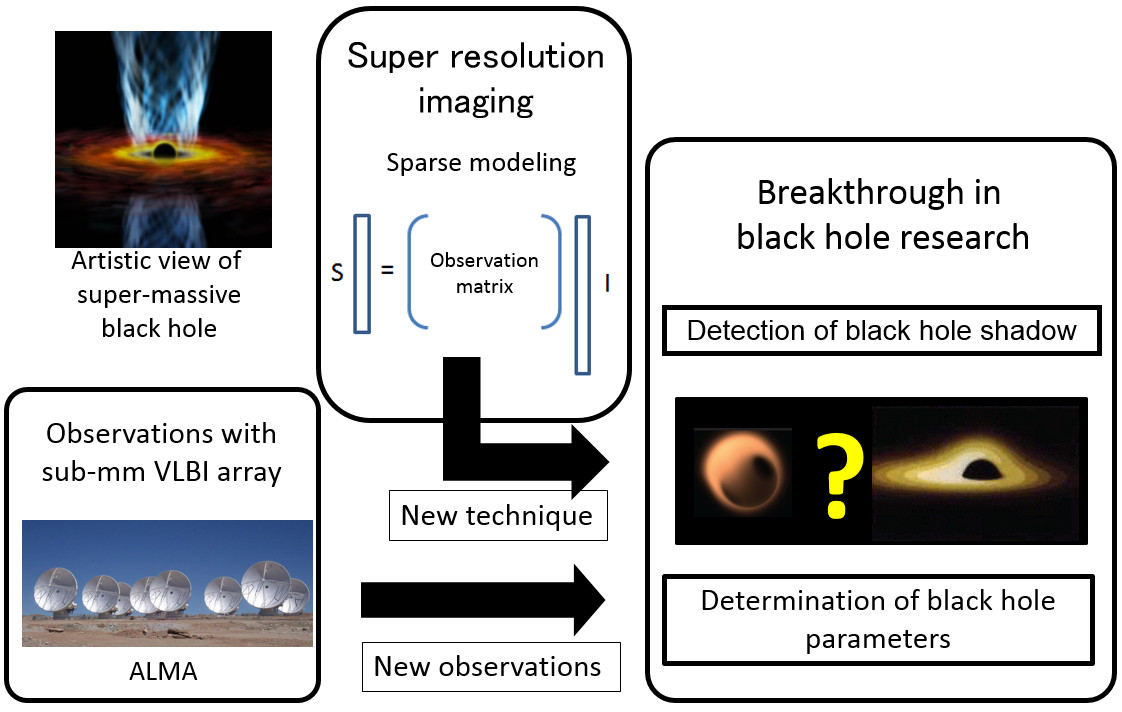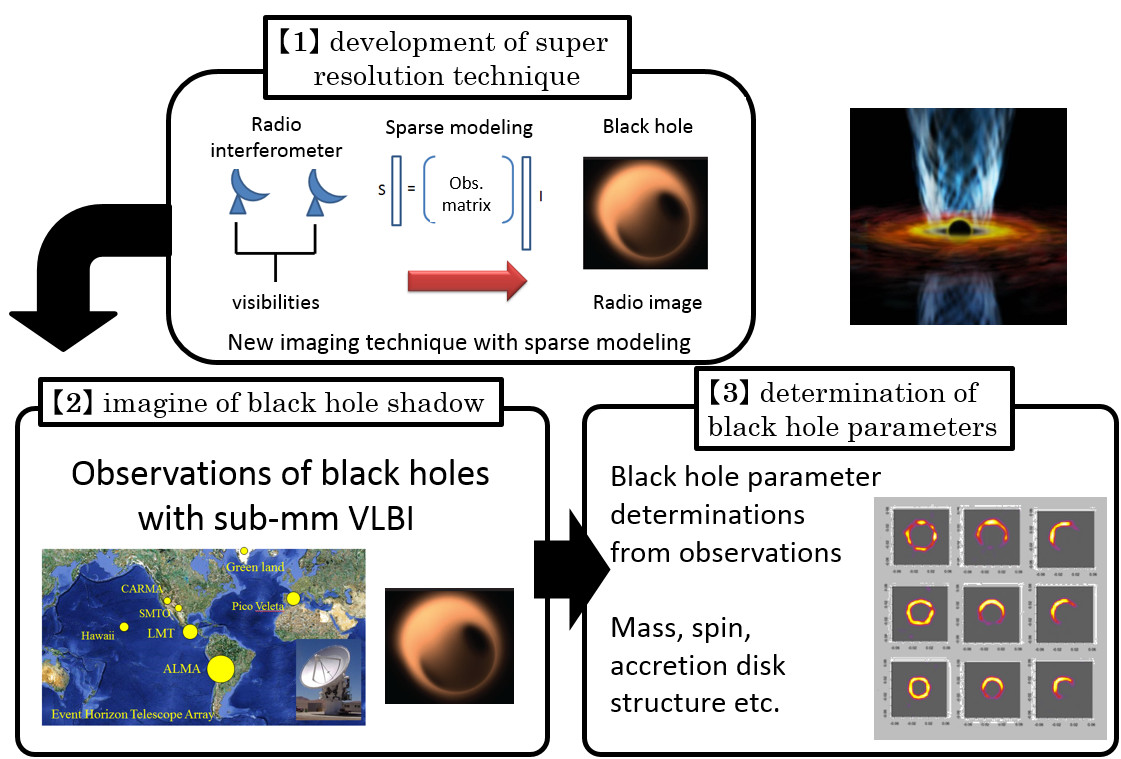(A02-3)
It is widely believed that most of galaxies harbor a super-massive black hole at their nucleus. However, it is yet to be confirmed whether or not these massive objects at galaxies' centers are indeed super-massive black holes surrounded by "event horizon". In order to obtain the ultimate confirmation of the existence of black holes, it is required to resolve and directly image the black holes in event-horizon-scale, where a black hole appears as "shadow" against the bright background emission of surrounding accretion disk.
In this , we apply the sparse modelling technique to the black hole observations with radio interferometer (mainly VLBI: Very Long Baseline Interferometer). By developing a new imaging technique which could allow us to achieve angular resolution higher than that of the conventional technique, we will attempt to detect the black hole shadow for the first time as well as to determine the black hole parameters such as black hole mass, spin, and the structure of the accretion disk.

In order to resolve the black hole shadows, the most effective way is to conduct VLBI observations at (sub-)mm toward nearby super-massive black holes. The best targets known so far are Sgr A∗, the super-massive black holes at the center of our own Galaxy, and the central black hole of M87, both of which have an expected angular size (Schwarzschild radius) of ~10 micro-arcsecond. The diameter of their black hole shadows is expected to be a few to five times of the Schwarzschild radius, and thus if an angular resolution of ~10 micro-arcsecond level is achieved with (sub-)mm VLBI, direct imaging of black hole shadows would be possible. For realizing this unprecedentedly-high angular resolution, an international collaboration called EHT (Event Horizon Telescope), with participation of several international research institutes including NAOJ in Japan, is building an global mm and sub-mm VLBI array including ALMA, which is the most powerful radio telescope on the Earth at mm and sub-mm wavelength. With the EHT array including ALMA, if operated at 1.3 mm, the expected angular resolution is around 25 micro-arcsecond, which would be roughly comparable to the expected shadow size.
This aims at imaging the event-horizon-scale structure of the super-massive black holes. By applying the technique of sparse modeling to radio interferometer imaging, we would like to realize super-resolution imaging technique, which provides us a significant advantage to image the black hole shadow. Then, we would also attempt to estimate the physical parameters of the black hole such as mass and spin. The main subjects of this are summarized as follows.
- [Subject 1] Super-resolution imaging technique based on sparse modeling
The resolution of radio interferometer is basically limited by the fact that the basic equations to be solved becomes underdetermined as the location of the stations and consequently the UV coverage becomes sparse. We will establish a super-resolution technique based on sparse modeling by directly solving the underdetermined problem without zero insertion to un-sampled visibility grids. In particular, we develop a super-resolution technique which is optimized for black hole observations with radio interferometer by considering practical UV coverage as well as noises in real observations. - [Subject 2] Imaging of super-massive black holes
By applying the super-resolution imaging technique developed in this research project, we will conduct imaging observations of black hole shadows. - [Subject 3] Determination of the physical parameters of super-massive black holes
Based on the detailed images of super-massive black holes, we will try to determine the physical parameters of black holes such as mass and spin as well as the inner most structure of accretion disks surrounding the black hole.
